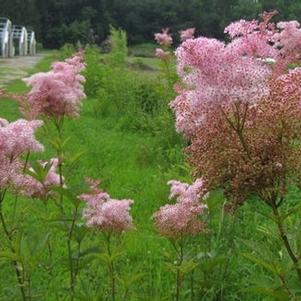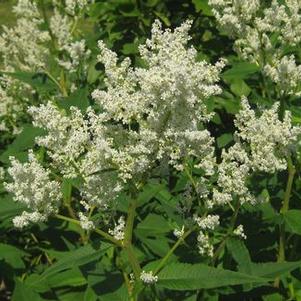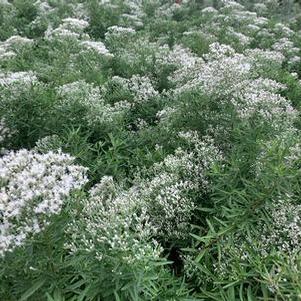Arnoglossum atriplicifolium
This obscure herbaceous perennial is native to much of the United States east of the Rocky Mountains, despite its minimal distribution across its geographic range. Arnoglossum atriplicifolium, synonymous with Cacalia atriplicifolia and commonly known as Pale Indian Plantain, is a somewhat rare and forgotten species typically found within prairies and grasslands, slopes and ravines, streambanks and sandy or rocky savannas and open woodlands, standing tall above smaller woodland and grassland species. Arnoglossum atriplicifolium is known to get nearly 8’ high in the landscape, its soft white, compound inflorescences towering above the large, clefted palmate foliage that has a nearly artificial appearance. The starkly upright flat-topped panicles which emerge above stiff, purple stems, appear first in July and often bloom well into late September. Specialized pollinators, including wasps, small solitary bee species, and flies, are responsible for cross-pollinating this species, of which its seeds are then wind-distributed to help Pale Indian Plantain flourish in naturalized sites.
- Category:
Perennials
- Alternate Cultivar: Cacalia atriplicifolia
- Hardiness Zone: 3
- Height: 60 Inches
- Spread: 36 Inches
- Bloom Color:
White








